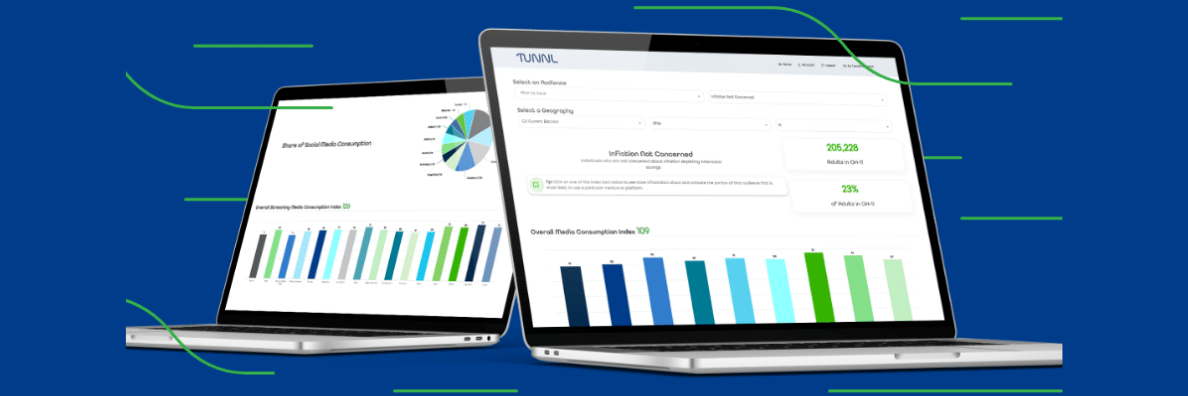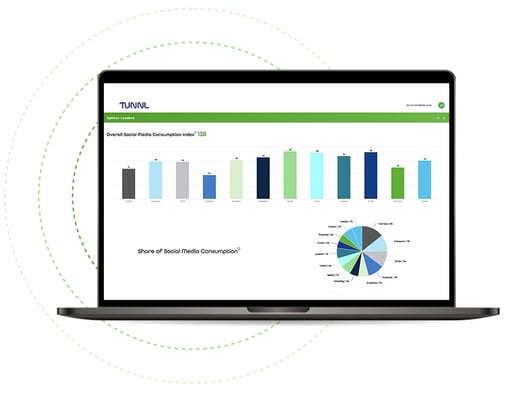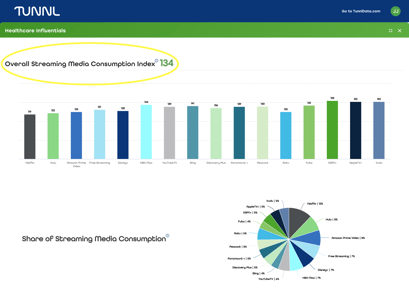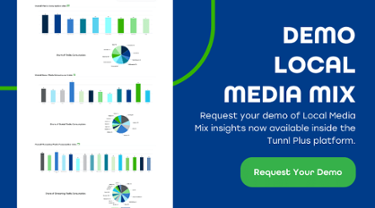Audiences | Media Optimization
What Is a Media Mix and Why Are They Essential for Influencing Your Audience?

Brent is the Co-founder and Chief Data Science Officer at Tunnl.
Updated May 2023
When you’re planning an ad campaign, one of the most important decisions to make is which mediums you’ll place your ads on to reach your target audience. After all, ad placement is costly. You don't want to waste your outreach budget placing ads on a medium your target audience doesn't even consume, but how do you know which channels your core market is consuming?
The what-ifs can feel endless. Are you spending too much on broadcast? Did you spend enough on digital? What if your audience really only listens to the radio? Are you advertising on the right streaming platform?Microtargeting is no time to take chances. To calm their fearful questions, many advertisers rely on media mixes to inform their targeted ad buying plans.
Tunnl offers advertisers a national and local media mixes, down to the media market, congressional district, and zip code level. Both media mix solutions show how a prebuilt or custom audience consumes media, so advertisers like you can confidently maximize their budgets for optimal reach.
But is a media mix the audience intelligence element missing from your ad taregting? Let's breakdown what's in a media mix, why media mixes are important, and how to access local and national media consumption data instantly in a platform like Tunnl.
What Is a Media Mix? Both as an Advertising Concept and a Tunnl Platform Feature
A media mix is a breakdown of communication channels preferred by a particular group of people. Media mixes help advertisers and media buyers understand where to place their message based on where their audience consumes the most media.
Tunnl offers media mix insights for every prebuilt and custom audience that shows advertisers their audience's preferences for:
|
Television formats
|
Social networks
|
Streaming platforms
|
Here's an example of what a national media mix looks like for one of Tunnl's prebuilt audiences.

What Is an Overall Media Consumption Index?
The overall media consumption index is a scale of how much the audience consumes media through a particular medium compared to the general public. How much an audience favors each medium is displayed as an index score.
The scale’s baseline is 100, meaning the audience consumes media on that medium at the same rate as the general public. 
If a number is higher than 100, it means you have a greater chance of reaching your audience on this medium because they consume their media here more often than the general public.
Anything below 100 means you will have a more difficult time reaching them and would need a more targeted approach to do so.
To illustrate, let’s take the Healthcare Influentials audience, for example. Video On Demand (VOD), TV Streaming, and Social Media all have numbers well above 100. This means this audience is pretty easy to reach on these mediums.
This graph also shows Live Broadcast, Traditional Radio, and Digital well below 100. Now, this does not mean that advertisers using this audience should not advertise on these mediums. Rather, it means that should you advertise on these platforms, you'll need a very targeted approach to effectively reach this audience.
What Is Share of Media Consumption?
Share of media consumption shows where the audience spends their time-consuming media as part of a whole.
For example, look at the pie chart above. This chart represents the percentage of time spent on each medium. This chart shows you that this audience spends most of their time on Live Broadcast and Live Cable.
Why Are Media Mix Insights Important?
A brand’s media mix is important for total ROI. Having a diverse mix of media means a brand is not putting all of its marketing or advertising budget in one place and relying on only one method to reach its target audience.
If one medium is underperforming, having a diverse mix means that the other mediums can help balance out the total ROI while you optimize ineffective (or less effective) options.
How Are Media Mixes Created?
There are different methodologies used by different microtargeting and ad targeting companies to create media mixes. Crucial questions to ask about media mixes are, “How did you create this media mix?" and "What data went into this media mix?”
We cannot answer for everyone, but Tunnl uses modeled reported behavior on media habits in combination with proprietary data on media consumption to create a unique index that reports on the overall mix of media consumption across various verticals.
How Can You Use Media Mix Insights?
Media mix modeling is a method used by advertisers to predict how media will perform based on a target audience’s previous activity and other factors. It helps marketers answer questions like:
- What is the right mix of budget allocation that will result in the highest possible ROI?
- How will different mediums perform now and in the future?
- How do offline and online media contribute to my ROI?
Media mixes focus on gathering information from all available sources, determining how much each piece is contributing to the whole, and predicting how the media will perform over time.
Where Can You Find Media Mix Insights?
Media mixes are offered by several audience intelligence providers to varying degrees of specificity and reliability. While some are focused on social media, others report on TV consumption. Tunnl offers both.
All Tunnl audiences — and their media mix insights — can be accessed in the Tunnl platform.
In addition to national media mixes, you can access granular geographic breakdowns of your audiences' viewing habits by...
- State
- City
- County
- Zip code
- Media Market
- Media Market by State
- Congressional District
"Even within a singular audience that is aligned on a particular issue, the way those people consume media can vary widely throughout different geographies, affecting the reach efficiency of your local campaigns," says Elise Lewis, Tunnl's Vice President of Product. "If you're executing an advertising campaign at a more local level, local media mixes provide geographically specific context of where you can reach and engage with your target audience."
-2.png?width=1600&height=800&name=Copy%20of%20Image%20v3%20-%20Twitter%20Post%20(1)-2.png) Take the above image, for instance. Upon clicking on this audience's Facebook index bar, a pop-up appears that delves further into the Energy Influentials' national use of the social media platform. You can change the geography for your specific needs and see how the media consumption behavior of the Energy Influentials changes based on your target location.
Take the above image, for instance. Upon clicking on this audience's Facebook index bar, a pop-up appears that delves further into the Energy Influentials' national use of the social media platform. You can change the geography for your specific needs and see how the media consumption behavior of the Energy Influentials changes based on your target location.
As a result, you can hone in on the mediums and platforms where you are most likely to engage the local segment of your target audience, delegating your budget to ad placements in those areas for maximum ad efficiency.
Get Started with Media Mix Insights
With the right audience insights, your budget can be maximized to create the ultimate impact on your issue. Media mixes are an integral element of those much-needed, efficiency-boosting audience insights.
When you know where your audience is spending the most time consuming media, you can make better decisions on ad placement and understand where unexplored optimization opportunities await you.
Tunnl's platform is a boon for digital, streaming, and linear TV advertisers who want to delve deeper into their audiences' media consumption habits, especially on a local level.
But wherever you get started with media mixes, you can count on campaign improvements and improved resonance with your target audience because you'll be meeting them where they are with your message.




